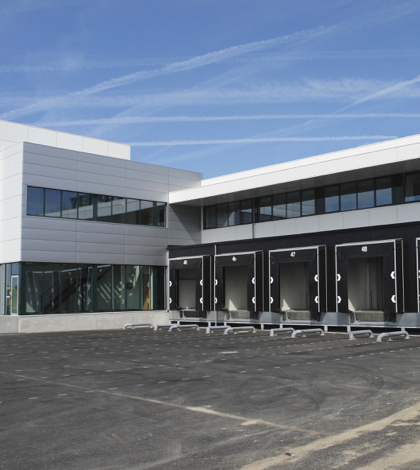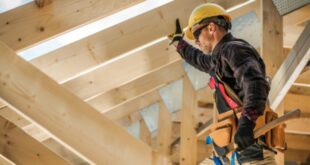The region’s industrial sector is expected to be strong again next year, although 2015 might be difficult to match, especially in absorption. Much depends on whether the demand for large e-commerce centers remains strong, according to several brokers.
Two thousand and fifteen has been a banner year for the Inland Empire’s industrial market.
By the end of the third quarter, 16.3 million square feet of industrial space had been absorbed in Riverside and San Bernardino counties, which topped the total absorption rates for all 2013 and 2014 by about two million square feet, according to Colliers International.
Nineteen million square feet of industrial space was under construction in the two-county region as the third quarter came to a close, on top of about 20 million square feet of projects that were finished during the previous 12 months.
The region’s industrial vacancy rate stayed low – 4.5 percent – even with all of that new space hitting coming online. Overall, the Inland Empire industrial market has enjoyed 24 consecutive quarters of positive net absorption, according to Colliers.
All of those numbers are a sign of a healthy market backed by strong fundamentals, and 2016 isn’t likely to be much different, say several industrial brokers with long track records in the Inland Empire’s industrial market.
The Inland Empire industrial sector should remain strong next year, with numbers equal or very close to what the market ultimately produces this year, the brokers say.
“It’s absolutely red hot right now, and I don’t see that changing,” said Chuck Belden, executive vice president with Cushman Wakefield Ontario. “At least for now I think the market will remain the same, and it might even get a little better.”
That could be a tall order, especially regarding projects of 900,000 square feet or larger.
Since the start of 2015, eight companies – Amazon, Ashley Furniture, Georgia Pacific, Home Depot, QVC, General Mills, Medline Industries and Black & Decker – all signed deals to occupy properties of 900,000 square feet or larger in the Inland Empire.
But with the ports of Los Angeles and Long Beach handling record amounts of cargo, only a shakeup in the global economy is likely to interfere with the import market, which would in turn disrupt the Inland Empire industrial market, Belden said.
“Right now we’re looking at record levels of net absorption and very low vacancy, and that just isn’t going away,” Belden said. “Only a major slowdown would cause that, and I don’t see that happening.”
E-commerce fulfillment centers, which typically cover upwards of one million square feet, are driving much of the industrial growth in the Inland Empire, and the region is certain to attract more of them during the next few years, said Tom Taylor, senior vice president with Colliers International Ontario.
“Maybe next year won’t be quite as good as this year because the market has to slow down a little, but I don’t see it changing much,” Taylor said. “The bottom line is that whatever goes on the market right now gets gobbled up right away.
“I think the feeling out there now is that 2016 will probably be as good as 2015, with most of the growth continuing to happen on the east side, in Perris and Moreno Valley.”
As an example of how quickly industrial space is being bought or sold in the Inland Empire, Taylor cited a 783,000-square foot “spec” project in Perris that was completed about two months ago. Within two weeks, the entire building had been leased by Wayfair Inc. an e-commerce company that sells furniture.
“It was gone right away,” Taylor said. “Normally you get two or three deals like that a year, but lately we’ve been getting more than that. It’s just a very strong market. We’re probably going to get to 20 million square foot absorption this year, which would be amazing.”
One local industrial broker said he expects the Inland Empire market to cool off a little bit next year, if only because no market can maintain the strength the Inland Empire industrial market has shown during the past year.
“I don’t think it can stay that hot because I don’t think we’re going to have as much inventory next year,” said Len Santoro, senior vice president with CBRE Group Inc. Ontario. “Things get absorbed as soon as they go on the market. But it still should be a very strong year, with e-commerce playing a major role.
“But there’s no question that, for gross absorption, 2015 is the best year we’ve ever had.”
The Inland Empire industrial market is also experiencing rent growth, with the greatest expansion among buildings 100,000 to 300,000 square feet: from 37 cents a square foot up to 45 cents a square foot, according to Colliers.
Also, land parcels that are suitable for industrial buildings are becoming more difficult to find, especially on the west side: land prices are going from $20 to $25 a square foot, a trend that is likely to last through next year.
“The demand for space is still there, so I think we’re going to see occupancy costs rise on both the sales and the leasing side,” said Jerry Holdner, vice president of market research for Voit Real Estate Services. “I think the real challenge in 2016 is will be finding space, because the demand is going to be so high and land is getting harder to find.”
E-commerce will continue to be a driving force, though it might not be quite as strong as it has been the past couple of years, Holdner said.
“More and more people are shopping on the internet,” Holdner said. “There’s no way that trend slows down.”
The Inland Empire is unquestionably one of the strongest industrial markets in the United States, having added 123 million square feet of industrial space during the past decade, despite the recession.
“The Inland Empire went from 350 million square fee of industrial space to 473 million square feet of industrial space during the past 10 years,” Holdner said. “No other market in the United States can say that.”
 IE Business Daily Business news for the Inland Empire.
IE Business Daily Business news for the Inland Empire.


